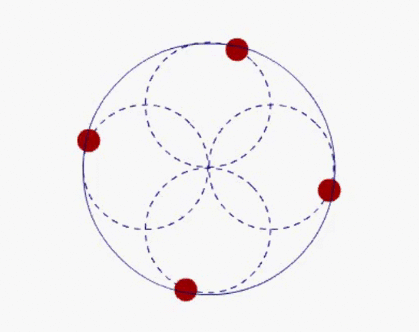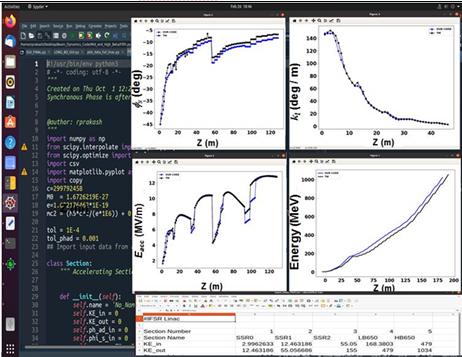| Accelerator and Beam Physics Section |
 Accelerator and Beam Physics Section
Accelerator and Beam Physics Section
Theoretical Beam Physics Research
Research in theoretical beam physics is carried out by the staff members of ABPS in the areas related to ongoing project activities. Fundamental beam dynamics studies to understand the focusing in solenoid and dipole magnets, and beam dynamics of an ellipsoidal bunch in focusing channels with space charge are some of the examples of studies performed by staff members of ABPS.

Understanding the focusing mechanism is a solenoid magnet
In past, theoretical and simulation studies have been performed in some areas of advanced accelerators, such as Smith-Purcell free-electron laser (SPFEL) and Cherenkov free-electron laser (FEL). A detailed theory of Smith-Purcell free-electron laser (SPFEL) and Cerenkov free-electron laser (CEFL) using the Maxwell-Lorentz approach has been worked out, and some novel configurations of these devices have been studied to show their viability as a compact source of terahertz radiation for various applications.More recently, theoretical and simulation studies have been performed to explore the design of proton/electron accelerator for production of medical isotopes.
Development of computer codes for various beam dynamics studies is also being carried out in ABPS. Computer codes have been developed for the following:
- Multipacting studies in elliptic cavities
- Longitudinal beam dynamics in proton accumulator ring
- Design of an electron catcher to collect the electrons, generated at the injection foil in the Accumulator Ring
- Configuration optimization of a proton/H- superconducting linac based on independently phased cavities.
Typical results obtained using some of these computer codes are shown below:

Results from In-house developed computer codes for (i) design of electron catcher in the accumulator ring (left) and (ii) multipacting studies in elliptic superconducting cavities (right)

A screenshot of the output of the in-house developed code, showing typical plots for design optimization calculations, and its comparison with a commercial code. Top-left plot shows evolution of synchronous phase. Plot in the top-right shows the evolution of phase advance per unit length. Bottom left and right plots show accelerating gradient and beam energy, respectively, along the linac
Interesting studies have been carried out to understand the influence of material parameters on the electromagnetic performance of superconducting cavities, to explore if the low purity niobium can also be used to make the superconducting cavities.
|
|
|








 Accelerator and Beam Physics Section
Accelerator and Beam Physics Section







